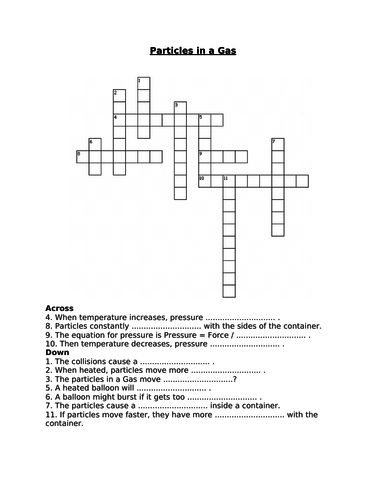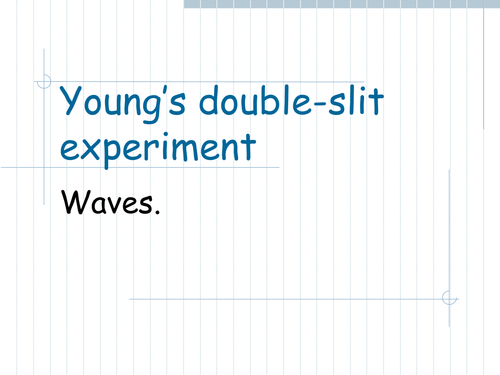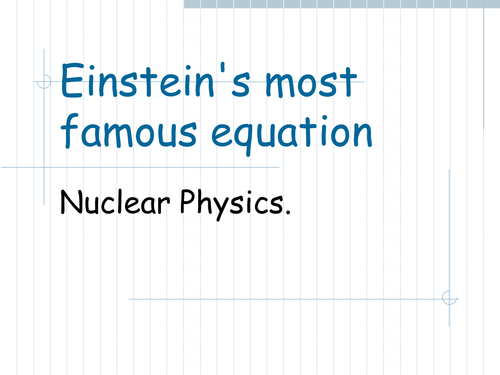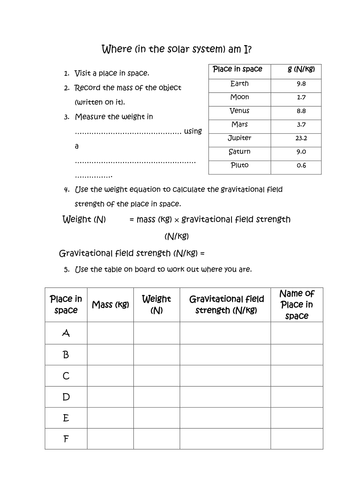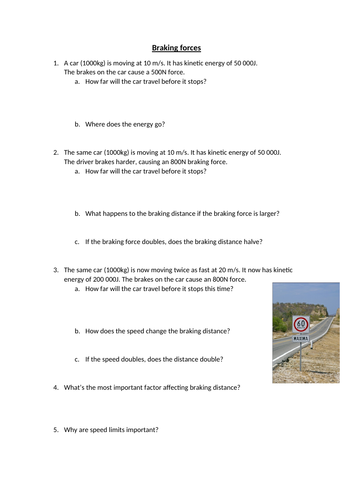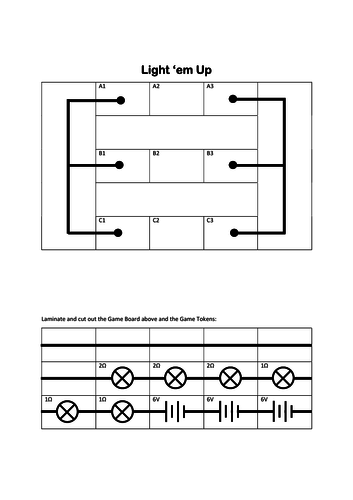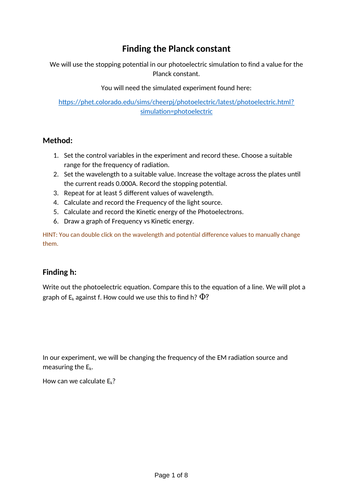
87Uploads
61k+Views
11k+Downloads
Physics

Particle motion in a gas crossword
A crossword puzzle on motion of particles in a gas. This includes the idea that gases cause pressure, and the effect of temperature.

Youngs double slit and diffraction gratings
My lesson on young double slit and diffraction gratings.
Talks them through the derivation as well as the concepts.
Bundle

A-level Physics waves bundle
Some lessons from the waves topic in A-level Physics,
including Interference, young's double slit, diffraction, stationary / standing waves and polarisation

Particle guess who
Classic Guess who game but with subatomic particles.
Students can practise using key terms like baryon, meson, hadron, lepton, anti-matter, charge, quark etc

Mass defect and binding energy
My lesson on mass defect and binding energy.
Talks them through the equation and how to use it.

Where in space am I?
A worksheet on gravity and weight.
This includes a technician guide. Students weigh different objects which are labelled with their mass. They then try and work out which planet they are on using the W=mg Weight, mass, gravitational field strength equation.
Bundle

Forces resources
Some resources on the forces topic. Could be used for KS3 or GCSE.
This includes a Forces true/false introduction worksheet, a balancing forces worksheet, a rockets forces worksheet and a worksheet on the Weight equation in Space.

Hubble's law and the Redshift equation
A worksheet allowing pupils to calculate recessional velocity using the change in wavelength of spectral lines from stars.
This focuses on using the v/c = change in wavelength / wavelength equation.
After answering the 5 questions, pupils can conclude that the more distant the galaxy, the faster it is moving, which makes a great introduction to redshift and the Big Bang Theory.
There is an extension task to plot the recessional velocity against distance, calculate Hubble’s constant and calculate the age of the Universe.
If calculated correctly, pupils should conclude that the Universe is 13.8 billion years old.
Answers included.
The extension task is a great way to stretch and challenge the most able at GCSE, while the main task allows weaker pupils to practice using the Doppler shift redshift equation.
This could also act as a nice task for A-level pupils, studying Hubble’s law.

Braking forces worksheet - Work done against friction
A worksheet on braking forces. These reinforce the Work done equation as pupils calculate the stopping distance for cars moving at different speeds.
There are also some questions on where the energy goes and the affect of speed on braking distance.
Answers are also included.

Atoms true or false
This is a true/false activity to introduce atoms. It includes 10 questions to get your students thinking about the size of atoms, and their structure.
I’ve used this in KS3 to introduce the atom, and right through to year 11 as a recap of previous knowledge.

Light 'Em Up - The circuits board game
A game based on Battle ships. (Alternative name: Bulbs and Batt(ery) ships?)
“Ammeter on A3”
“Voltmeter from B1 to B3”
I used this as an entire lesson’s activity, pitting my students against each other in a knock out tournament. The game reinforces and assesses their knowledge of voltage and current in series and parallel. It can be adapted to differentiate by giving them suggested boards and including some numbers. I’ve included a cheat sheet page for this purpose.
How to set up:
Design your board.
Work out the voltage and current at different points on your board.
How to play:
The aim of the game is to correctly draw your opponent’s circuit. On your go, choose a square and ask for the current, or choose 2 squares and ask for the voltage across them. Your opponent has to be honest and correct! You can ask 1 question per go and take it in turns until someone can correctly draw the circuit.
Teacher instructions:
Pupils should be in pairs or 4s to play this game.
Each group will need 2 game boards, 2 sets of tokens and 2 answer sheets.
I suggest printing and laminating the game board page and cutting out the tokens, and then printing disposable answer sheets for them to draw and scribble on. You could even use Velcro on the back of the tokens so that they stick to the board.

Finding the Planck constant using Photoelectric Simulation
This worksheet allows pupils to use the stopping potential and wavelength found using the Photoelectric effect simulation, to draw a graph of kinetic energy against frequency and find a value for the Planck constant. They could also find the work function of the material using the y-intercept.
There is even a past paper question linked to the practical to encourage them to think about uncertainty.

Investigating speed of a toy car - analysing experiments and drawing graphs homework sheet
This worksheet is designed for use in a lesson or as a homework, to teach about analysing experiments and using data.
The worksheet describes an experiment to find the speed of a toy car. Pupils have to state the independent, dependent and control variables. They have to identify outliers/anomalies , calculate averages, plot a graph of results, and write a conclusion.
Includes an extension to the task - evaluation of the method.
I like to use this as a homework after conducting a similar experiment in class.
Answer sheet is also included.

How to Draw a Graph in Excel - Practical endorsement
A how-to guide for drawing a line graph in Excel.
This includes range bars and can therefore be used for creating graphs used during practicals up to A-level.
I use this for my A level groups during one of the required practicals. This could be used for CPAC 5 to show data processing through software.

Physics equations help sheet
I use this as a poster, but this could also be shared with pupils.
The sheet gives advice about how to answer equation questions including using prefixes required for GCSE.

